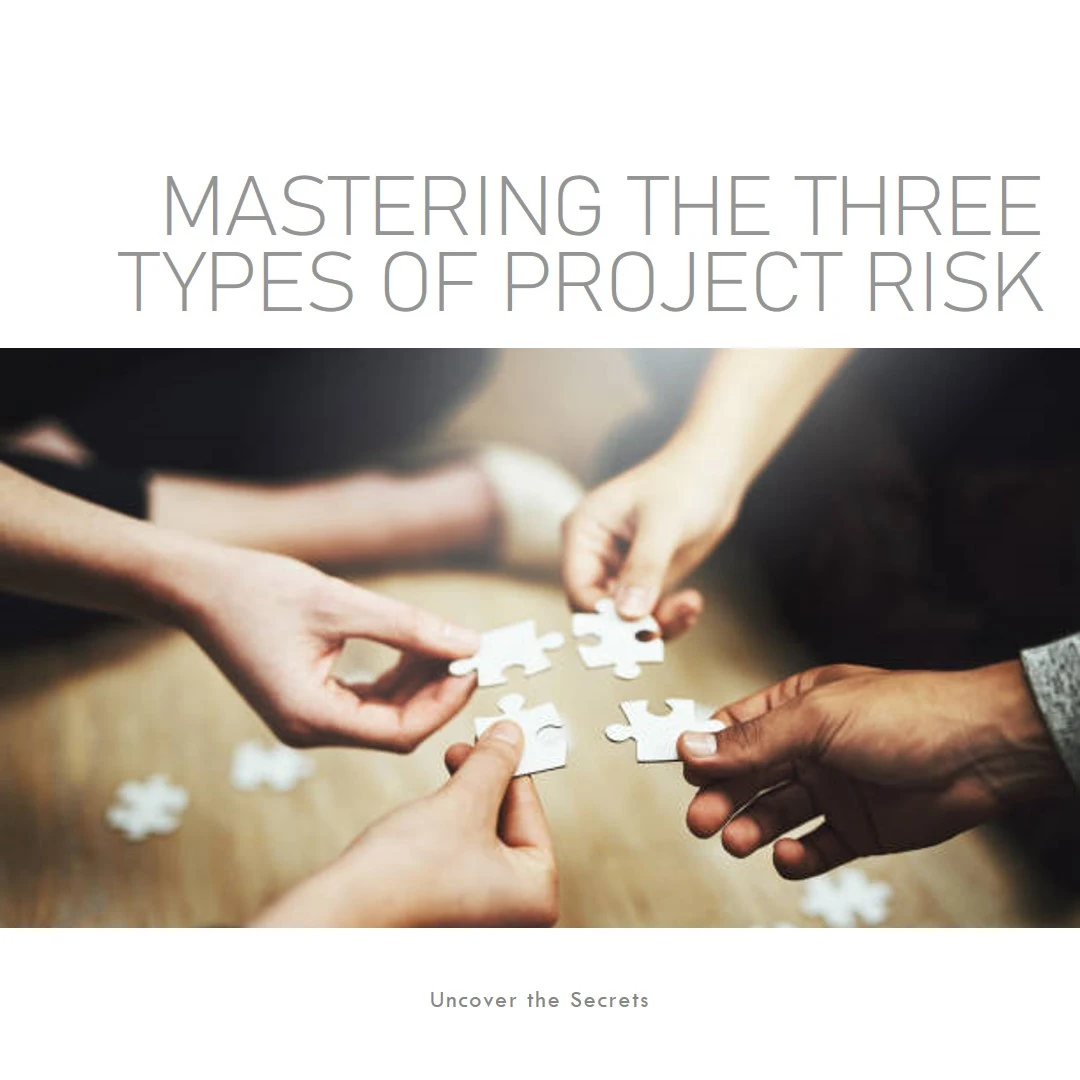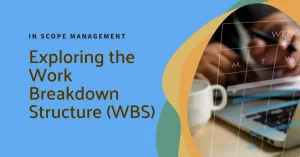I. Introduction
Ahh, project management. The grand world of planning, organizing, and overseeing various projects to bring them to a successful completion. It’s a wild ride filled with ups and downs, and sometimes it feels like you’re on an adrenaline-pumping rollercoaster. But what’s the most thrilling (and sometimes terrifying) aspect of project management? It’s got to be risk!
A. Brief overview of the importance of risk management in projects
If you’ve ever managed a project, you know that no two projects are exactly the same. Each one comes with its own set of challenges and surprises, which is what keeps us on our toes. One of the most crucial aspects of successful project management is being able to identify, assess, and mitigate risks. Think of it as your secret weapon to staying one step ahead of the game and navigating your way through the maze of potential hazards that could otherwise derail your project.
B. Introduction to the three types of project risk
Now, before you can become the ultimate risk management guru, it’s essential to understand that there are three main types of project risk. Imagine them as the three musketeers of the risk world, each with their own unique characteristics and powers. Our mission in this blog post is to explore these risk musketeers, learn their secrets, and ultimately master the art of handling them like a true project management superstar.
C. Purpose of the blog post: uncovering the secrets to mastering these risks
So, buckle up, risk enthusiasts! We’re about to dive into the exciting world of known risks, unknown knowns, and unknown unknowns. By the end of our adventure, you’ll have the knowledge and tools to tackle any project risk that dares to cross your path. Are you ready to become a risk management master? Let’s go!
II. The Three Types of Project Risk
Welcome to the realm of project risks, where every twist and turn brings new challenges to overcome. To help you navigate this treacherous territory, we’re going to introduce you to the three musketeers of risk – each with its own unique traits and quirks. Let’s get acquainted!
A. Definition and explanation of each type of risk
- Known risks
First up, we have the “known risks.” These are the daredevils we can anticipate, the risks that have shown up in previous projects, or are just plain obvious. Think of them like the villains in a superhero movie – we know they’re coming, and we can plan our strategy accordingly.
- Unknown knowns
Next, we have the mysterious “unknown knowns.” These are the risks that we might be aware of on some level, but haven’t fully recognized or understood. Picture them as the hidden trapdoors in a haunted mansion – we know there’s something fishy going on, but we just can’t put our finger on it.
- Unknown unknowns
Lastly, we meet the enigmatic “unknown unknowns.” These are the wildcard risks, the ones we can’t predict because we don’t even know they exist. They’re the surprise plot twists that catch us off guard and keep us on our toes.
B. Examples of each type of risk in real-world projects
To help you understand these risk musketeers better, let’s look at a few examples in the context of a project:
- Known risks: In a software development project, it’s a known risk that some team members might fall sick or go on vacation, causing potential delays. So, we plan for backups and buffer time.
- Unknown knowns: During a construction project, the team might be aware that the soil in the area is prone to erosion, but they may not fully understand the implications until they start digging and face unanticipated challenges.
- Unknown unknowns: Imagine organizing an outdoor event, only to be hit by a freak storm that nobody saw coming. It’s an unknown unknown that throws a wrench in the works and forces you to adapt on the fly.
Now that we’ve met our risk musketeers, let’s move on to learning how to identify them so we can tackle them head-on!
III. Identifying Project Risks
Now that we’ve been introduced to the three musketeers of risk, it’s time to sharpen our detective skills and learn how to identify these sneaky culprits. Think of this process as a thrilling game of Clue, where the more risks we uncover, the better equipped we are to conquer them!
A. Importance of risk identification in successful project management
Imagine embarking on a treasure hunt without a map or any idea of what the treasure looks like. Sounds pretty daunting, right? That’s what managing a project without identifying risks would feel like. Risk identification is the first crucial step in ensuring your project sails smoothly through stormy waters. By uncovering the risks lurking in the shadows, you can prepare for the challenges that lie ahead and steer your project to success.
B. Techniques for identifying risks
Don your detective hat and grab your magnifying glass, because we’re about to explore some top-notch risk identification techniques that’ll turn you into a project risk sleuth:
- Brainstorming sessions
Gather your team for a brainstorming extravaganza! Encourage everyone to share their thoughts and ideas about potential risks. The more perspectives you have, the better your chances of uncovering hidden risks.
- Expert interviews
Seek guidance from the wise ones – the experts who have been there, done that, and have the project management battle scars to prove it. Their experience and insights can help you spot risks you might otherwise miss.
- Risk checklists
Create a risk checklist based on past projects and industry best practices. This handy tool can serve as a guide to ensure you don’t overlook any common risks while you’re deep in the trenches of your project.
- Assumption analysis
Every project is built on a foundation of assumptions, and sometimes, these assumptions can be the root of potential risks. Analyze your project’s assumptions, and be ready to challenge them to reveal any hidden risks.
C. Tips for effective risk identification
To become a true risk identification master, keep these tips in mind:
- Foster a safe and open environment that encourages team members to share their thoughts and concerns without fear of judgment.
- Don’t forget to consider risks that could arise from external factors, like changes in the market or regulations.
- Keep your risk radar on throughout the project, as new risks may emerge as the project progresses.
Armed with these risk identification techniques, you’re now ready to spot the three musketeers of risk lurking around every corner. But identifying them is just the beginning – next, we’ll learn how to assess their potential impact on your project. Onward, risk detectives!
IV. Assessing Project Risks
Congratulations, risk detectives! You’ve successfully identified the three musketeers of risk lurking within your project. But don’t put away your magnifying glass just yet – it’s time to delve deeper into the world of risk assessment. In this thrilling chapter, we’ll discover how to weigh the potential impact of each risk and determine which ones deserve our undivided attention.
A. Risk assessment process
Think of risk assessment as a high-stakes game of “Would You Rather?” where we’re trying to figure out which risks pose the greatest threats to our project. To do this, we’ll evaluate each risk based on its likelihood of occurrence and potential impact. The end goal? To prioritize our risks so we can focus our efforts on tackling the most dangerous ones first.
B. Quantitative and qualitative risk assessment methods
Ready to flex your analytical muscles? Let’s explore some of the top risk assessment methods that’ll help you gauge the magnitude of each risk:
- Probability and impact matrix
Picture a grid that plots the likelihood of a risk occurring against its potential impact. This nifty tool helps us visualize our risks and decide which ones demand immediate action. The higher the probability and impact, the more attention a risk should get.
- Expected monetary value (EMV) analysis
Put on your financial wizard hat and dive into the world of EMV analysis, where we calculate the potential financial impact of each risk. By multiplying the probability of occurrence by the estimated cost, we can determine which risks could hit our project’s bottom line the hardest.
- Risk sensitivity analysis
Welcome to the land of “what ifs,” where we explore different scenarios to see how sensitive our project is to various risks. By tweaking different variables, we can identify which risks have the greatest potential to throw our project off course.
C. Prioritizing risks for effective project management
Armed with the insights gained from your risk assessment methods, it’s time to rank your risks and decide which ones to tackle first. Keep in mind that it’s not just about focusing on the highest-ranked risks – it’s also about balancing your resources and ensuring you can handle multiple risks simultaneously.
Now that you’re a risk assessment pro, it’s time to take action! In our next chapter, we’ll explore the wonderful world of risk mitigation, where we learn how to slay these risk dragons and protect our project from harm. Stay tuned, risk warriors!
V. Mitigating Project Risks
Hats off to you, risk warriors! You’ve successfully identified and assessed the three musketeers of risk. But the battle isn’t over yet – it’s time to face these risk dragons head-on and learn how to mitigate their potentially disastrous effects on your project. So, grab your shield and sword, and let’s dive into the realm of risk mitigation!
A. Strategies for risk mitigation
Every good warrior has a plan, and in the world of risk mitigation, we have four main strategies at our disposal:
- Risk avoidance
Sometimes the best way to deal with a risk is to sidestep it entirely. Risk avoidance involves altering your project plan to eliminate the risk or its potential impact. Think of it as a strategic detour that keeps your project on track, even if it means taking a slightly different path.
- Risk reduction
When you can’t avoid a risk altogether, it’s time to turn to risk reduction. This strategy involves taking action to minimize the likelihood or impact of the risk. Just like a skilled swordsman, you’ll weaken your risk dragons bit by bit, making them more manageable.
- Risk transfer
Why face a risk alone when you can share the burden? Risk transfer involves shifting the responsibility for a risk to a third party, such as through insurance or outsourcing. It’s like recruiting allies to help you battle those pesky risk dragons.
- Risk acceptance
Sometimes, the best strategy is to embrace the risk and prepare for its potential consequences. Risk acceptance involves acknowledging that a risk exists and developing a contingency plan to deal with it if it materializes. It’s like saying, “Bring it on, risk dragons! We’re ready for you!”
B. Developing a risk response plan
Now that you’ve chosen your risk mitigation strategies, it’s time to assemble them into a cohesive risk response plan. This battle plan will outline how you’ll address each risk, including the resources you’ll allocate and the timeline for action. Remember, a solid risk response plan is like a suit of armor that shields your project from harm.
C. Monitoring and controlling risks throughout the project
Risk mitigation isn’t a one-time event – it’s an ongoing process that requires vigilance and adaptability. Keep a watchful eye on your risk dragons as your project progresses, and be prepared to adjust your risk response plan as needed. Stay on your toes, risk warriors, and you’ll keep your project safe from harm!
With these risk mitigation strategies in your arsenal, you’re well-equipped to conquer the three musketeers of risk and protect your project from disaster. But our journey isn’t over yet – in the next chapter, we’ll wrap up our adventure with some key takeaways and best practices for successful risk management. Onward, risk heroes!
VI. Key Takeaways and Best Practices
Bravo, risk heroes! You’ve mastered the art of tackling the three musketeers of risk, and your project is now safer than ever. But before we close this epic adventure, let’s reflect on some key takeaways and best practices that’ll help you continue to conquer risks like a true project management superstar.
A. Summary of the importance of mastering the three types of project risk
In the thrilling world of project management, risks are the challenges that keep us on our toes and force us to think creatively. By mastering the art of identifying, assessing, and mitigating the three types of project risk – known risks, unknown knowns, and unknown unknowns – you’ll be better equipped to navigate the twists and turns of any project and lead your team to victory.
B. Best practices for successful risk management in projects
As you continue your journey through the realm of project management, keep these best practices in mind to ensure your risk management game remains strong:
- Foster a culture of open communication and collaboration, where team members feel comfortable discussing potential risks and sharing their insights.
- Never underestimate the power of planning – develop thorough risk response plans and be prepared to adapt them as needed.
- Don’t just focus on the risks themselves – also consider the opportunities that may arise from tackling these challenges.
- Remember that risk management is an ongoing process – monitor and control risks throughout the project to ensure they don’t catch you off guard.
C. Encouragement for continuous improvement in risk management
The realm of project management is ever-changing, and there’s always more to learn. Embrace the spirit of continuous improvement by seeking out new risk management techniques, learning from the experiences of others, and refining your own skills. With each project, you’ll become more adept at facing the three musketeers of risk and leading your team to triumph.
And with that, our risk management adventure comes to an end. As you venture forth into the world of project management, armed with the knowledge and tools to conquer any project risk, remember that you’re now part of an elite group of risk heroes, ready to face any challenge that comes your way. Good luck, and may the spirit of the three musketeers of risk be with you always!
To find out how Artificial Intelligence is changing the Project Management landscape, you have enjoy reading this article https://www.shaunstoltz.com/did-artificial-intelligence-just-change-everything-about-project-management/
Find out more about Shaun Stoltz https://www.shaunstoltz.com/about/
This post was written by an AI and reviewed/edited by a human.



